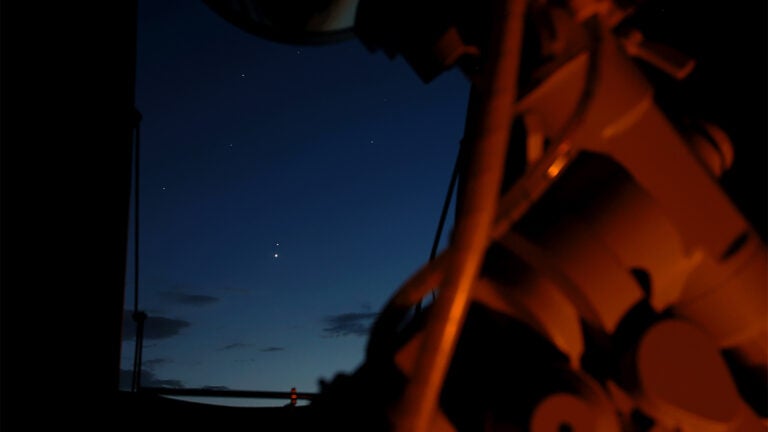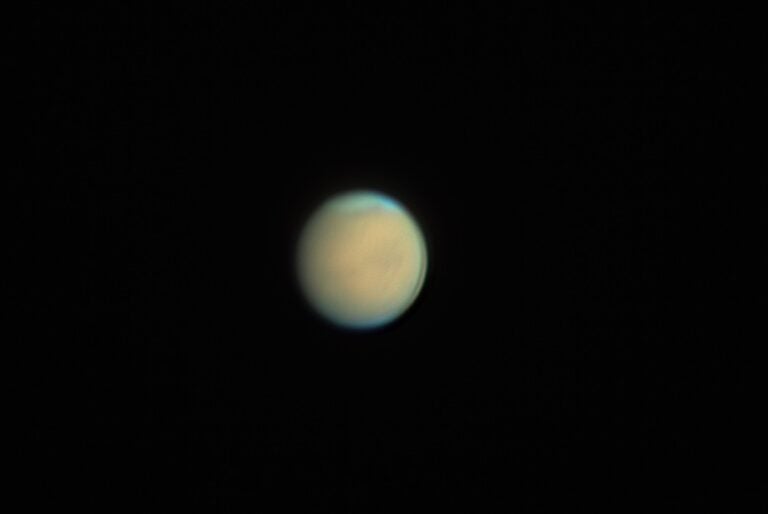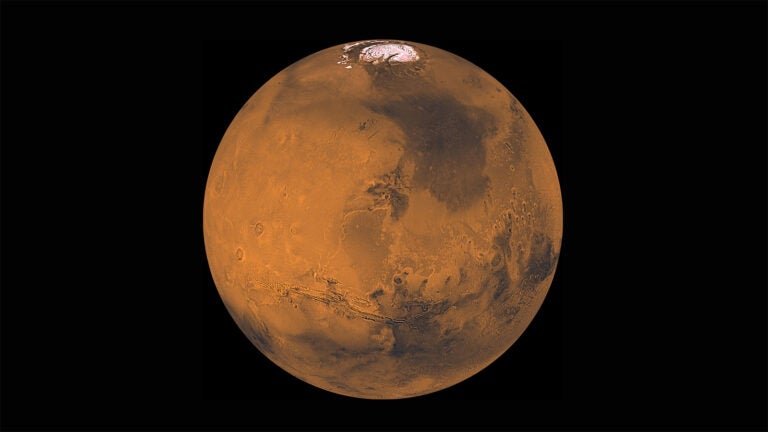By tradition, Jupiter Trojans receive their names from figures in the Trojan War, with Greek characters assigned to L4 and Trojan fighters in L5. To add to the mystique, each group also has one spy: 624 Hektor, named for a Trojan hero, lives in the Greek side, and 617 Patroclus orbits with the Trojan side.
Before 1990, astronomers paid scant attention to the possibility that Trojan asteroids orbited planets other than Jupiter. The discovery of 1990 MB changed all that, and, not long afterward, the opportunity came to name this asteroid. Our group proposed the name Eureka, after the legendary story of Archimedes running around naked shouting “Eureka!” (“I found it!”) after discovering his now-famous buoyancy principle. We suggested the name in the hope that future Mars Trojans would all be named for the same feeling of joy that results from making such a discovery.
What is the significance of finding 5261 Eureka, as it’s now officially known? Although astronomers had long believed that planets other than Jupiter could capture asteroids in their respective Lagrangian points, actually finding one was another matter.
In the years since 1990, astronomers have found three more martian Trojans — 1999 UJ7 at the L4 point, and 1998 VF31 and 2007 NS2, which join 5261 Eureka at L5. Half a dozen other asteroids orbit near the Lagrangian points, but not closely enough to count as Trojans. Neptune also gets in on the Trojan fun, and, because the neptunian Trojans are most likely Kuiper Belt objects, they may outnumber Jupiter Trojans by a factor of 10.
While all the Trojan asteroids really exist as rocky, miniature worlds, the characters with whom they share their names are probably mythological. Made famous in Homer’s epics The Iliad and The Odyssey, the Trojan War of Greek literature is likely apocryphal.
However, in 1870, archaeologists discovered ruins dating from the 13th or 12th century b.c. that are now considered to be that of Troy, so there may be some truth to the ancient stories. It looks like the Trojans, whether here on Earth or out in the solar system, will remain a source of fascination and discovery for some time.
Back in the summer of 1990, just after discovering a comet that reached 3rd magnitude, I joined my colleague Henry Holt for three observing runs. We were both assisting Gene and Carolyn Shoemaker at the time; while they explored impact craters in the Australian outback, Holt and I handled the observing sessions at Palomar Observatory’s venerated 18-inch Schmidt telescope.
Those nights in June were clear, warm, and short. We captured countless images each evening as part of our contribution to the Shoemakers’ massive, 2-decade-long comet and asteroid survey. During this work, we found a total of 32 comets and hundreds of asteroids.
Shortly after dinner on Friday, June 22, as I scanned two films from the previous night, I detected an object that moved rather hastily. We reported it routinely, and the discovery appeared in International Astronomical Union (IAU) Circular 5045 on July 5.
A few days later, I received an urgent message from Ted Bowell, one of the senior astronomers at Lowell Observatory. He excitedly explained that 1990 MB, as our hastily moving object was initially known, had orbital characteristics consistent with a Trojan asteroid around Mars, a type of body still thought to be merely theoretical. It soon turned out that we had in fact discovered the first martian Trojan.
Before the summer of 1990, the only known Trojan asteroids all orbited Jupiter and numbered in the thousands. Such objects reside at the place in a planet’s orbital path where gravity “cancels out,” allowing the object to remain stationary relative to two larger bodies, like Earth and the Moon, or Jupiter and the Sun.
These places, known as Lagrangian points, were first suggested by the French mathematician Joseph Louis Lagrange (1736–1813). Max Wolf (1863–1932), the German astronomer and astrophotography champion, discovered the first such asteroid, 588 Achilles, in February 1906.
Astronomers currently know of more than 4,000 jovian Trojan asteroids, out of a population that may exceed a million. More than half of the Jupiter Trojans are crowded into the L4 Lagrangian point, which floats ahead of Jupiter in its orbit; the rest occupy the L5 region, which trails the giant planet.
Of Mars, Troy, and their asteroids
June 2011: Our enigmatic neighbor and its brethren make for some exciting discoveries.









